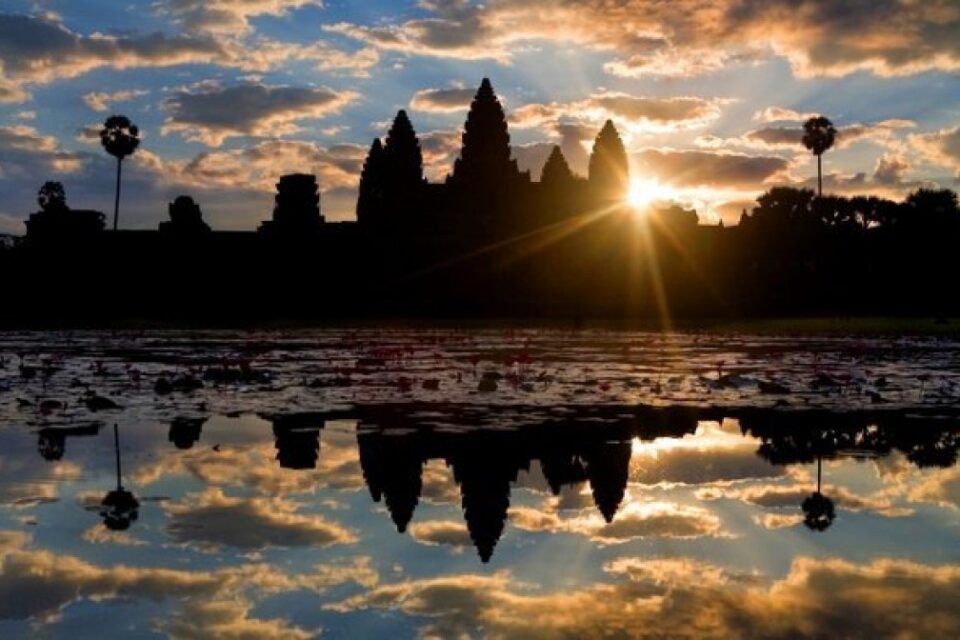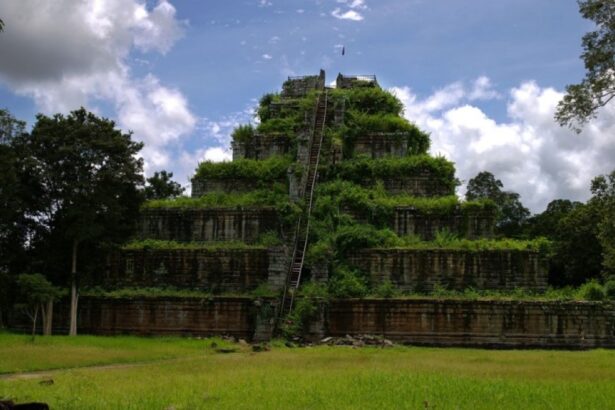Angkor is one of the most significant archaeological sites in Southeast Asia. Angkor Archaeological Park, which covers around 400 square kilometers and includes forested areas, has the spectacular remains of the Khmer Empire’s various capitals from the ninth to the fifteenth centuries.
The Angkor architecture is evidence of the strong Khmer religious beliefs – Hinduism and Buddhism. And the most popular temples in the Angkor area, are Angkor Wat, Angkor Thom, Bayon, Baphuon, Phimeanakas, Ta Keo, Ta Prohm, Banteay Kdei, and Pré Roup, East Mebon, Kravan, Preah Khan, Neak Poan, Banteay Srey, Rolous Group, etc., which has numerous sculptural ornamentations. UNESCO has established a comprehensive program to protect this symbolic landmark and its environs.
In the Angkorean era, the ancient Khmer Kingdom dominated most of present Southeast Asia from 802 to 1434 AD. The Angkor area, which is the soul of the Khmer people, consists of 200 monuments, Hydraulic constructions (basins, dykes, reservoirs, canals), and communication routes, which are spread over an area of 401 square kilometers. Angkor is thus a prominent site that exemplifies cultural, religious, and symbolic elements, as well as having significant architectural, archaeological, and artistic worth. The park is inhabited, and various villages, some with ancestors dating back to the Angkor period, are dotted across it. The populace engages in agriculture, notably rice cultivation.
Previous conservation and restoration efforts at Angkor between 1907 and 1992, particularly by the École Française d’Extrême-Orient (EFEO), the Archaeological Survey of India, the Polish conservation body PKZ, and the World Monuments Fund, had no significant impact on the overall authenticity of the monuments that comprise the Angkor complex and did not interfere with the overall impression gained from individual monuments.
Although it sustained significant damage while under the dictatorial leadership of the Khmer Rouge government in the 1970s and previous regional wars. The restoration and conservation regulations and projects of the temple have been gradually carried out by many actors both domestically and internationally; for example, the Zoning area was set up to protect the Angkor site in 1994, APSARA Authority was established in 1995 to protect and manage the area, and law to protect Cambodian heritage was passed in 1996, the nearly 30 years of work between UNESCO and its international Co-ordination Committee for the Safeguarding and Development of the Historic Site of Angkor (ICC) in collaboration with representatives from the Royal Government of Cambodia and APSARA authority.
To explore more insight of park, please access via: Angkor Archaeological Park and its environs.




